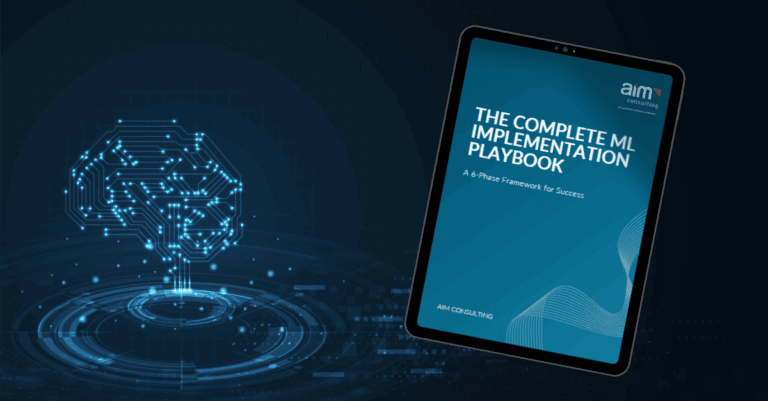
How the most successful organizations are abandoning project-centric thinking to unlock sustainable competitive advantage
The most successful organizations today have figured out something their competitors haven’t: they’re not in the project business—they’re in the product business. Whether it’s their data platforms, security protocols, customer analytics, or internal applications, these companies recognize that everything they build and maintain is essentially a product that serves specific users and delivers measurable business value.
Meanwhile, their competitors remain trapped in endless project cycles, burning out talented teams while delivering minimal business impact. The gap between these approaches is widening rapidly, and it’s becoming a defining factor in organizational success.
If your company is still thinking in projects, you’re already behind.
Why the Project Model is Broken in Today’s Economy
Today’s business environment demands agility, but projects create rigidity. When market conditions shift overnight and competitive threats emerge from unexpected directions, the project model’s emphasis on fixed scope and predetermined outcomes becomes a liability.
The project model optimizes for the wrong metrics. Success is measured by completing projects on time and within budget, not by delivering business value. Teams focus on checking boxes rather than solving problems, delivering what was requested rather than what’s actually needed.
Resource allocation becomes a zero-sum game. Every project competes for the same pool of talented people, forcing leaders to make impossible decisions about which initiatives get staffed. Teams spread thin across multiple projects, context-switching constantly and never building deep expertise.
Most importantly, the project model disconnects people from purpose. When teams work on isolated projects with unclear business outcomes, they lose sight of how their contributions create value, leading to disengagement and burnout.
The Hidden Costs of Project-Centric Thinking
The hidden costs of project-centric thinking extend far beyond obvious inefficiencies like status meetings and reporting.
Opportunity Cost: Your best people—who could be solving strategic challenges—are managing project dependencies and attending coordination meetings instead of architecting your next-generation solutions.
Innovation Tax: Project-centric organizations struggle with innovation because new ideas don’t fit into existing project structures. When breakthrough ideas emerge, the response is often: “Let’s put it in the backlog for next quarter.” By then, competitors have shipped it.
Technical Debt Accumulation: Project success measured by meeting deadlines encourages shortcuts. “We’ll fix that in the next project” becomes the unofficial motto, but technical debt compounds, making every future initiative more expensive.
Cultural Decay: Teams develop a “not my job” mentality because responsibilities are bound by project scope. When issues span multiple projects, they fall through the cracks.
How Product-Thinking Transforms More Than Just Delivery
From Feature Factories to Value Creators: Product teams don’t just build features—they solve problems. Instead of asking “How do we deliver all the features?” they ask “What’s the most important problem we can solve this quarter?”
Ownership Creates Accountability: When teams own products rather than work on projects, accountability becomes natural. Product teams are responsible for the entire lifecycle, eliminating the blame-shifting common in project environments.
Decision-Making Gets Distributed: Product teams can move faster because decision-making authority goes to teams closest to the problems. They operate within clear strategic boundaries but have autonomy to adapt without navigating complex approval processes.
Data-Driven Culture Emerges: Product teams naturally become data-driven because their success depends on measurable business outcomes. This evidence-based approach spreads throughout the organization.
Real Transformation Requires Structure AND Behavior Change
The biggest mistake organizations make is treating product transformation as a process change rather than an organizational change. They implement agile frameworks and create product owner roles while leaving underlying structures unchanged.
Structure must enable function, and funding provides the energy to function. The organization’s structure must be intentionally designed to support delivering value through products. This means funding, roles, success metrics, and governance must all enable and reinforce that function. When funding models remain tied to projects, teams will naturally continue operating with a project mindset, even if you rebrand them as product teams.
Behavior change is the harder challenge. People have spent years learning to succeed in project environments. They need ongoing support, coaching, and reinforcement to develop new instincts and mental models.
Leadership sets the tone. If executives continue asking “When will the project be done?” instead of “How are we performing against our product metrics?” they signal that project-thinking still matters.
The Path Forward
The choice facing organizations today isn’t whether to embrace product-centric thinking—it’s whether to lead the transformation or be forced into it by competitive pressure. Companies that recognize they’re already in the product business have the opportunity to create sustainable competitive advantages through faster innovation, better resource allocation, and more engaged teams.
Every company is a product company. The question is: when will yours start acting like one?
Ready to assess where your organization stands?
Every company is a product company—but is yours acting like one?
Get your free Product Readiness Assessment and learn how to align your organization for sustainable competitive advantage.





